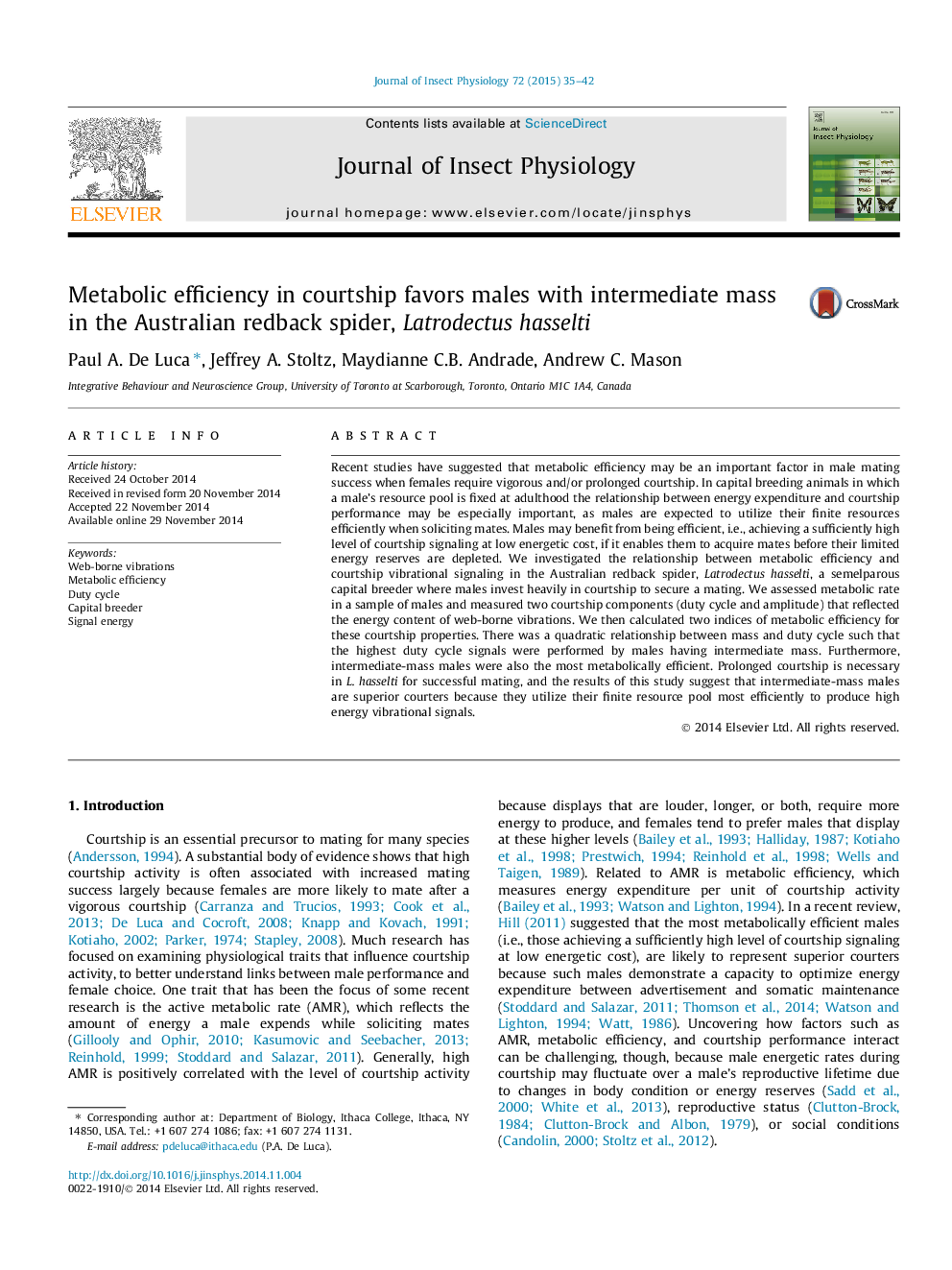| Article ID | Journal | Published Year | Pages | File Type |
|---|---|---|---|---|
| 2840373 | Journal of Insect Physiology | 2015 | 8 Pages |
•Male courtship performance is often influenced by active metabolic rate (AMR).•We examined the role of AMR on courtship vibrational signaling in redback spiders.•High energy signals are associated with males having intermediate mass.•Intermediate mass males are most efficient producing high energy signals.
Recent studies have suggested that metabolic efficiency may be an important factor in male mating success when females require vigorous and/or prolonged courtship. In capital breeding animals in which a male’s resource pool is fixed at adulthood the relationship between energy expenditure and courtship performance may be especially important, as males are expected to utilize their finite resources efficiently when soliciting mates. Males may benefit from being efficient, i.e., achieving a sufficiently high level of courtship signaling at low energetic cost, if it enables them to acquire mates before their limited energy reserves are depleted. We investigated the relationship between metabolic efficiency and courtship vibrational signaling in the Australian redback spider, Latrodectus hasselti, a semelparous capital breeder where males invest heavily in courtship to secure a mating. We assessed metabolic rate in a sample of males and measured two courtship components (duty cycle and amplitude) that reflected the energy content of web-borne vibrations. We then calculated two indices of metabolic efficiency for these courtship properties. There was a quadratic relationship between mass and duty cycle such that the highest duty cycle signals were performed by males having intermediate mass. Furthermore, intermediate-mass males were also the most metabolically efficient. Prolonged courtship is necessary in L. hasselti for successful mating, and the results of this study suggest that intermediate-mass males are superior courters because they utilize their finite resource pool most efficiently to produce high energy vibrational signals.
Graphical abstractFigure optionsDownload full-size imageDownload as PowerPoint slide
